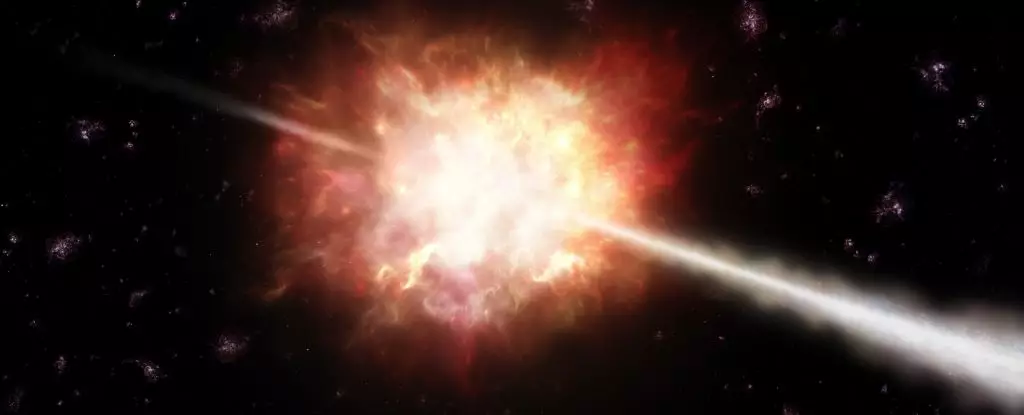The Universe, as we know it today, is a complex and fascinating place. From the moment of the Big Bang, the cosmos has been evolving and expanding, giving rise to stars, galaxies, and ultimately, life itself. One of the most intriguing aspects of the Universe is the presence of heavy elements, such as gold, platinum, and uranium, which were not present in the early stages of its formation. The question of how these heavy elements came to be has puzzled scientists for decades, leading to various theories and hypotheses.
One of the leading theories regarding the production of heavy elements in the Universe involves gamma-ray bursts (GRBs). These powerful explosions, which can outshine even the brightest stars, are thought to be capable of producing heavy elements through a process known as the rapid neutron-capture process, or r-process. During an r-process event, the nuclei of heavier elements capture numerous neutron particles in a short amount of time, leading to the formation of heavier elements beyond iron on the periodic table.
In August 2017, a significant astronomical event occurred that shed light on the potential role of GRBs in producing heavy elements. The detection of a gravitational wave signal by Ligo and Virgo, followed by a short gamma-ray burst known as GRB 100817A, led to the observation of a kilonova – a fainter cousin of a supernova explosion. Analysis of the kilonova revealed evidence of the production of heavy elements, providing support for the r-process theory in explaining the abundance of heavy elements in the Universe.
The Brightest Gamma-Ray Burst: BOAT
More recently, a study focused on a long gamma-ray burst named GRB 221009, also known as the Brightest Of All Time (BOAT). This particular event, which occurred on October 9, 2022, was ten times more energetic than any previous GRB and was close enough to Earth to impact its atmosphere. Despite its extraordinary brightness, observations using the James Webb Space Telescope (JWST) revealed that the BOAT was caused by a relatively average supernova explosion, with no evidence of heavy element production through the r-process.
The findings from the BOAT study presented a puzzling contradiction – while the conditions in the core of a very bright event like a long GRB are thought to be conducive to the r-process, there was no indication of heavy element production in this case. This raises questions about the role of gamma-ray bursts as a primary source of heavy elements in the Universe and suggests that alternative sources may be responsible for the abundance of heavy elements we observe today.
The mystery of heavy elements in the Universe continues to intrigue and challenge scientists. While gamma-ray bursts have long been considered a potential source of heavy element production, recent observations have cast doubt on this theory. The discovery of kilonovae and the study of events like the BOAT point to the existence of other, perhaps more significant, sources of heavy elements in the cosmos. Further research and exploration will be necessary to unravel the true origin of these intriguing elements and deepen our understanding of the Universe’s complex and evolving nature.


Leave a Reply